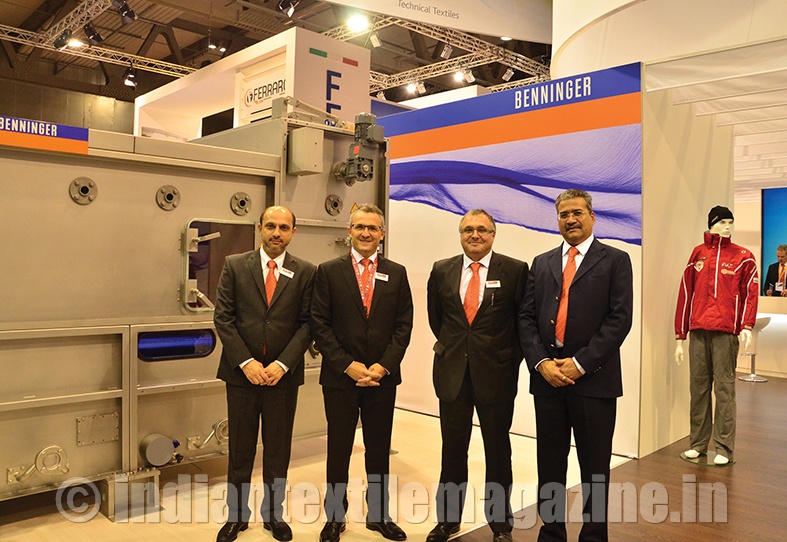With over 120,000 visitors from 174 countries, ITMA was a great success again. Majority of the visitors came from Italy, followed by India and Turkey. The organizers, exhibitors and experts agree that this was, with respect to the quality of visitors and the projects, the best ITMA since 1995. Once again it proved that it is the most important international trade fair for the textile and clothing industry.

This year again ITMA was held under the motto “Sustainability”. More companies recognized the importance of sustainable production and therefore want to invest in sustainable innovations.
Benninger aroused great interest from customers, prospective customers and trade visitors from around the world with the newly designed booth layout and presentation of exhibits, as well as the theme islands. In addition to realization of concrete projects, the surprisingly high number of interesting, new projects, not only for the existing clients but also for potential customers, was particularly positive. Also in the field of modifications / modernizations the group was able to compete and looked forward to continuing these projects.
As in recent years, the stall visitors got attracted to the re-designed original Benninger Küsters dyeing padder. This is distinguished in particular by improved accessibility and usability. Also the minimization of the dye liquor consumption and consequently the reduced production costs due to the nip dyeing were very positive received.
Visitors were also highly impressed with the washing compartments – TRIKOFLEX and TEMPACTA. While the washing / dwelling compartment TEMPACTA has been especially developed for all low-tension washing processes, the new re-designed drum washing compartment TRIKOFLEX, thanks to its leading washing drum with front and backwashing technology, guarantees a high mechanical washing effect and allows not only very low, controlled fabric tensions, but also crease-free fabric transport, even with sensitive goods.
Benninger could also optimally present its new product lines “Technical Textiles” and “Resource Management” and bring those important issues closer to the numerous visitors.